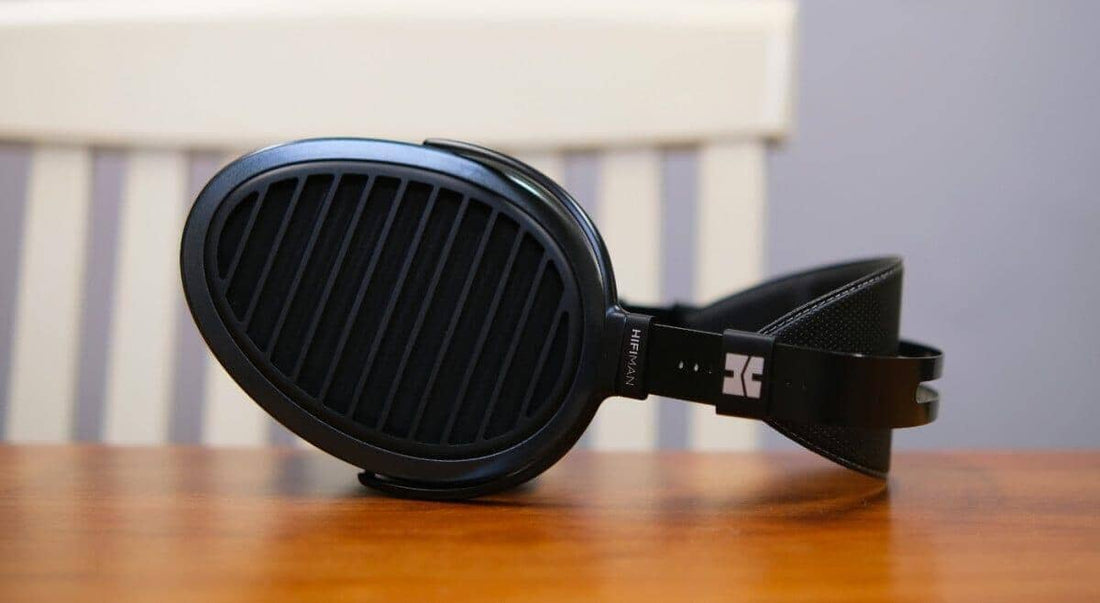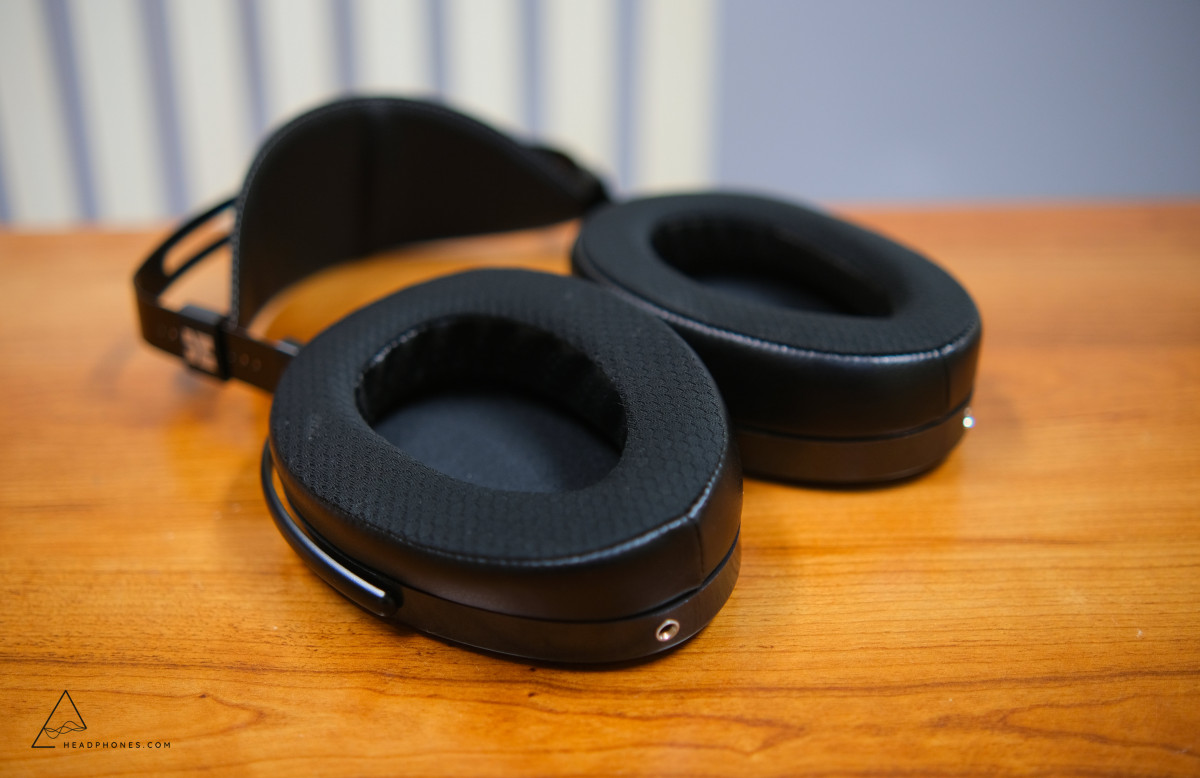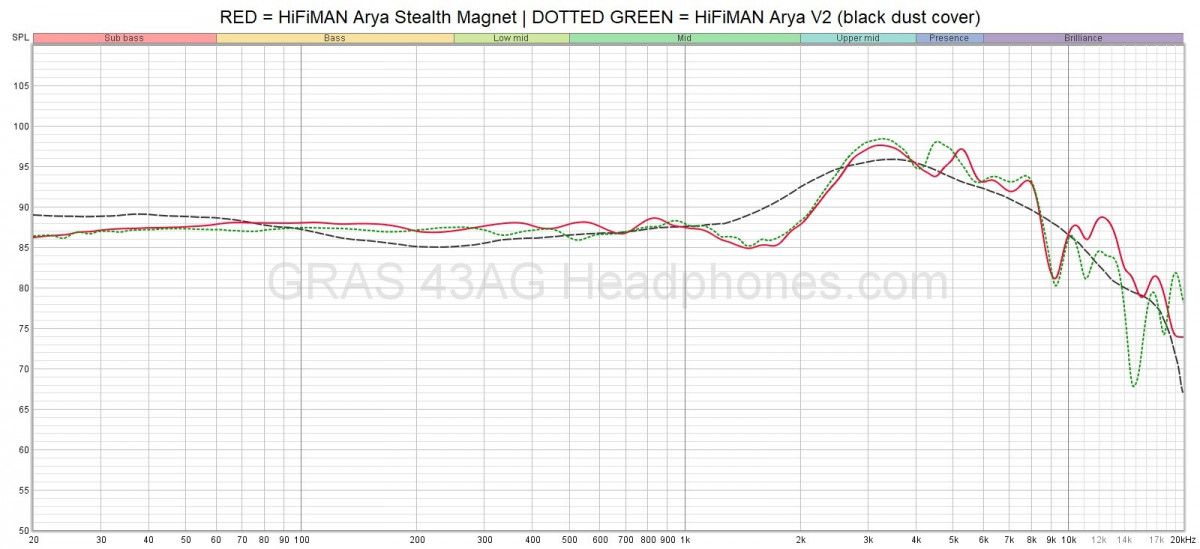HiFiMAN Arya Stealth Magnets Edition Review (with comparison to Arya V2)

Introduction
HiFiMAN is a brand that's been on my radar since I heard their entry-level Sundara which impressed itself upon me as being one of the best headphones under $500, if not the best headphone under $500. I had similar sentiments about the top-of-the-line HiFiMAN Susvara's standing after hearing it at CanJam SoCal 2021. However, I have not had the opportunity to hear HiFiMAN's offerings in-between till now. Specifically, I'll be sharing my thoughts on the Arya Stealth (also known as the Arya V3 to some hobbyists). The Arya Stealth maintains the $1600 price tag of its predecessors, but adds on the stealth magnet system that was pioneered with the Susvara. In theory, the stealth magnet system mitigates unwanted diffraction of sound waves through their unique shape. Read on to find out how this technology stacks up, plus what distinguishes the Arya Stealth from the Arya V2.
Units were provided for review courtesy of Headphones.com and will be returned upon completion of the review. As always, what follows are my honest thoughts and opinions to the best of my ability.
Source & Drivability
All critical listening was done off of an M1 Macbook Air > Audirvana > iFi Audio Micro Black Label with lossless FLAC files. The Arya Stealth is fairly easy to drive and I had no trouble hitting my usual listening volumes. If you'd like to learn more about my listening methodology, test tracks, and general beliefs in audio, then I would encourage you to check out this page.
In the Box
Inside the packaging of the Arya Stealth, you'll find nothing more than the headphones themselves and a cable. It's hard to knock the feeling that, while the Arya Stealth's presentation is clean, it's a bit bare-bones. In all fairness, I've also read a number of critiques about HiFiMAN's cables in the past, but I have to say that I really don't mind it - it's perfectly usable if not a bit springy. Thicker, heavier cables don't always translate to being better in practice.

The Arya Stealth itself has the design that characterizes many of HiFiMan's other headphones. It has a "double" headband wherein the first headband - which is really the headphone's frame - does not shift, and the second headband is used to make adjustments. Aesthetically, this means that the Arya Stealth does protrude vertically from the head a tad more than some other headphones. The Arya Stealth's ear cups likewise use some interesting design language. They swivel for adjustability and are almost egg-shaped in nature, providing a very enveloping and comfortable experience on the ears. Some might find that the design puts more strain on the jaw, though. Overall build quality is acceptable in my opinion - meaning I think there's room for improvement. The stealth magnets on the unit I received don't quite align parallel with the slots in the grills. I also noticed that adjusting the headband scrapes against the black anodization.


Sound Analysis
Most of HiFiMAN’s headphones measure closely to a more "analytical" version of the Harman target; the Arya Stealth is no exception. Relative to the Harman target, the Arya Stealth has 1) less sub-bass, 2) a leaner mid-range, and 3) more treble extension.
The following is how the HiFiMAN Arya V2 and V3 measure on the GRAS 43AG with anthropometric pinna relative to the combined version of the Harman preference target (2013 bass, 2018 mids and treble). This reference point is suitable for most listeners looking for an even spectral balance from their headphones.
 How do you read this? The dotted black line is the target (the reference point), and the colored lines are how the headphones in question measure. Effectively, this shows how significantly the headphone’s frequency response deviates from the target. It’s important to note that because the target is highly smoothed, there are places where deviation is required (like at around 9khz for example).
How do you read this? The dotted black line is the target (the reference point), and the colored lines are how the headphones in question measure. Effectively, this shows how significantly the headphone’s frequency response deviates from the target. It’s important to note that because the target is highly smoothed, there are places where deviation is required (like at around 9khz for example).
Bass
Despite the lack of a pronounced sub-bass shelf, bass on the Arya Stealth digs deep and adequately conveys material that tokens the ~30Hz regions. Masking, the perception with which quicker bass notes are indistinct, also does not concern the Arya Stealth due to its relatively linear sub-bass and mid-bass. Decay (the fading of bass notes) is generally shorter; however, this can be mitigated with the addition of a sub-bass shelf using DSP. Now, if the Arya Stealth pulls the short end of the stick here for any reason, it would be for its perception of ‘slam’ and ‘texture’ characteristics. Bass transients on the Arya Stealth are articulated somewhat...softly even with the aid of DSP from the iFi Micro Black Label’s XBass switch. Take for example the typically heavy, impactful drum machines of Apink's "My oh My" which are best described as sounding somewhat puffy and aloof on the Arya Stealth. Relative to my memory of some of Audeze’s high-end planar headphones - such as the LCD series - I can’t help but feel that Audeze’s planars were more spoken for these qualities of bass.
Midrange
The midrange of the Arya Stealth sports an uncanny level of tuning refinement for a headphone. It’s a leaner, neutral midrange; my only bones to pick with it would be 1) a recession at 1-2kHz and 2) a hair too much presence at 4-5kHz. The former might even be a non-issue for many listeners, as recessions in frequency response are more difficult to discern than peaks. In fact, the only way I can describe this recession as presenting itself is via a lack of chesty-ness to some singers such as Randy Houser on his song “Note to Self”. The bump at 4-5kHz is more noticeable; I observe that “s” consonants can run a hair pronounced on the Arya Stealth, lending to potentially undesirable sharpness. But these are nitpicks; to reiterate, I think this is a commendable midrange all told.
Treble
In contrast to the refinement of the Arya Stealth’s midrange, I find its treble to be more of a double-edged sword. It’s fairly smooth if not slightly emphasized from 5-10kHz, but it sounds like there are a couple of peaks at ~13-14kHz. Unfortunately, I do find these peaks to be distracting on some brighter tracks such as SNSD’s “Into the New World” despite the excellent extension and shimmer. And then there are the minor timbre issues wherein I observe a slight metallic sheen to finger snaps, cymbals, and the like. Frankly, it’s just a bit surprising to hear these issues given that the HiFiMAN Susvara, which pioneered HiFiMAN’s stealth magnet technology, has one of the smoother (yet equally impressively extended) treble responses I’ve heard. Maybe if I was 20 years older and my ears were less sensitive…in any case, I digress.
Technical Performance
There is no question in my mind that the Arya Stealth is a stellar technical performer. It has clarity - the leading sharpness of notes - for days, particularly in the midrange and treble. Due to its also mostly excellent frequency response, it presents no shortage of sonic minutiae; it simply sounds like the Arya Stealth is able to capture every surface-level detail in a given track. That said, I do find that reverb trails can come across slightly truncated; the Arya Stealth’s perception of micro-detail is more limited. Notes are seemingly not as textured as on some top-tier dynamic driver headphones like Focal’s wares.
For other metrics of intangibles, the Arya Stealth can be considered simply “very good” and certainly competitive for $1600 to my ears. Staging on the Arya Stealth is wide and I hear adequate diffusal of the center right and left corners of the stage. Notes are localized sharply; I have no qualms to pick on this front. Macro-contrast does seem to favor louder parts of music, and by this, I mean that I find myself gravitating toward quieter listening volumes while listening on the Arya Stealth. If I were looking at frequency response, I would attribute this perception to the leaner midrange and abundance of upper-treble which can lend to a slightly strident presentation.
Versus the Arya V2

Generally, the Arya V2 can be described as having a more laid back presentation than its successor. The Arya V2 has noticeably less upper-treble (13-14kHz), along with a couple other subtle tweaks like less upper-midrange presence (4-5kHz) and sub-bass (20-200Hz). Basically, the Arya V2 is more warm and less airy than the Arya Stealth. The Arya V2’s timbre also sounds slightly more realistic to me, especially in the upper-treble treble, although some still might find its general emphasis at 5-10kHz to be a hair fatiguing.
Frequency response aside, let’s address staging. This seems to be a point of contention with popular sentiment claiming that the Arya V2 has better staging. I would agree that yes, the Arya V2 sounds “grander” like it has more soundstage height, but the difference relative to the Arya Stealth is marginal. The Arya Stealth actually has sharper imaging wherein it’s easier to distinguish where the vocal overdubs are coming from on Taeyeon’s “Fine” (perhaps by virtue of the presentation being pushed forward more). This is in addition to a small edge in clarity and slam going to the Arya Stealth (again, note my use of the word small).
To my ears, there’s a general sense of the Arya V2 vs. the Arya Stealth subtly falling into the two sides of the ever-pervasive “musical” vs. “clinical” debate respectively. Both are excellent performers; at least in my opinion, it would largely come down to listener preference to decide which is the better headphone. I know cop-outs suck (you want to read “buy this one!”), but I think coming to terms with this nuance is important.
The Bottom Line
Leaving aside the question of the Arya 2 vs. the Arya Stealth, the stiffest point of competition that comes to mind is Sennheiser’s HD800S. From memory, the HD800S edges out the Arya Stealth for raw staging and detail retrieval; however, its frequency response is not as desirable. It lacks the Arya Stealth’s bass extension and the Sennheiser HD800S's lower-treble peaks are more problematic. As a result, I think there’s a good argument for the Arya Stealth edging out its contemporary - at least on paper. Even subjectively, though, I prefer the Arya Stealth; it is the default recommendation that comes to mind at $1600 for this reviewer. This may come as surprising given that I haven’t been particularly enthusiastic about any headphone I’ve reviewed, but let it be known that HiFiMAN’s consistency is certainly impressive.
-Precogvision
Buy the HiFiMAN Arya Stealth Magnets Edition at Headphones.com for the best available price here.
Discuss the HiFiMAN Arya Stealth Magnets Edition on the HEADPHONE Community Forum Here.
---
